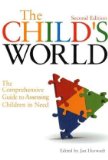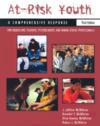Two Studies On Autism
October 2007 - Research reported in the Journal of Autism and Developmental Disorders has found that characteristic and sometimes severe symptoms of autism such as repetitive motions, problems interacting with others and impaired communication can improve with age.
Lead author Paul T. Shattuck, an assistant professor of social work at Washington University in St. Louis said:
"On average, people are getting better. It is a hopeful finding, but the fact remains that those with severe autism will depend on others for their everyday needs and care for the rest of their lives."
The researchers explain that autism is a widespread condition in the United States, affecting an estimated one in 150 children and an unknown number of adults. The current report is part of an innovative longitudinal study of more than 400 adolescents and adults with autism and their families.
Marsha Mailick Seltzer, professor of social work and director of the University of Wisconsin Madison Waisman Center explained:
"This project is one of the largest long-term studies of autism and it represents the collaborations of a team of researchers who together are investigating how autism changes across the life course."
Participants were recruited from service agencies, schools and clinics, half from Wisconsin and half from Massachusetts. In-depth interviews are conducted with parents every 18 months to assess changes in their children's symptoms and behaviors. The current report analyzed changes in 241 adolescents and adults, initially aged 10 to 52 years over a five-year period and found that a significant proportion demonstrated improvements in symptoms and maladaptive behaviors.
Paul Shattuck commented:
"For all major symptoms, the percentage of people who improved was always greater than the percentage who worsened. If there was significant symptom change over time, it was always in the direction of improvement, though there was always a group in the middle that showed no change. The mean never went down."
Researchers assessed changes in typical features of autism using broad categories such as impaired verbal and nonverbal communication, impaired social interaction, and repetitive behaviours focusing on 32 specific symptoms including reciprocal conversation and interest in people, compulsions and rituals. Non-specific maladaptive behaviors such as aggression and self-injury were also measured. Across all categories, a larger proportion of participants improved than worsened, with less improvement among the 69 per cent who also had mental disabilities.
Paul Shattuck concluded:
"Our study demonstrates that significant changes are occurring. But in terms of the underlying biological mechanisms, we don't yet know what's going on."
Prospects for greater understanding of autism are offered in a separate study from University of Miami psychologists Peter Mundy and Lisa Newell published in Current Directions in Psychological Science which assesses recent research into a little-understood developmental skill known as "joint attention". Researchers explain that the ability to share information and comprehend the thoughts and intentions of others distinguishes humans from other primates and is a key element in development of language and social functioning. Autism is characterized by "chronic, pronounced impairments in initiating joint attention" or a lack of ability to spontaneously share experiences with others.
Infants communicate and learn by using joint attention, following the gaze of others and by using eye contact and gestures to command the attention of people around them. This is a vital skill not just in infancy. Researchers comment that individuals who are unable to "follow engage and react to joint attention may forever be impaired in their capacity for relatedness and relationships".
The concept of joint attention requires the integration of several networks in the brain. The "attention-systems model" proposes that social cognition results from two basic forms of attention regulated by different networks of neurons. One involves paying attention to the external world and the actions of others, the other involves paying attention to the self.
The researchers propose that joint attention is dependent on these two areas of the brain becoming interconnected throughout development so that simultaneous track can be kept both of the direction of one's own attention and that of others. They point out that communication between regions of the brain "especially those implicated in initiating joint attention, is one of the main cognitive impairments of autism".
More Psychology Articles
Developmental Psychology Articles Inter-Personal Psychology Articles
 The Child's World: The Comprehensive Guide to Assessing Children in Need At-risk Youth: A Comprehensive Response for Counselors, Teachers, Psychologists and Human Services Professionals |